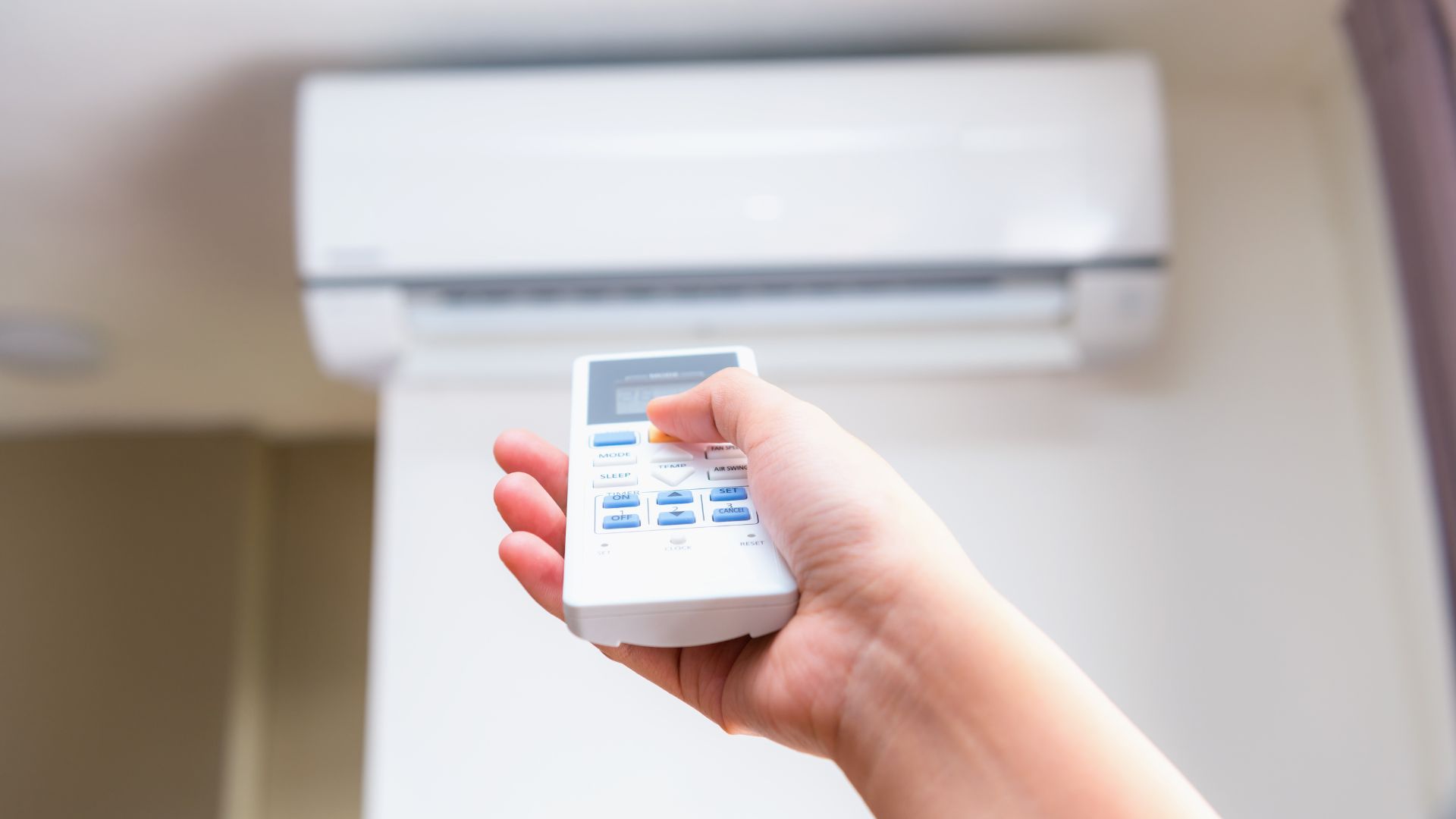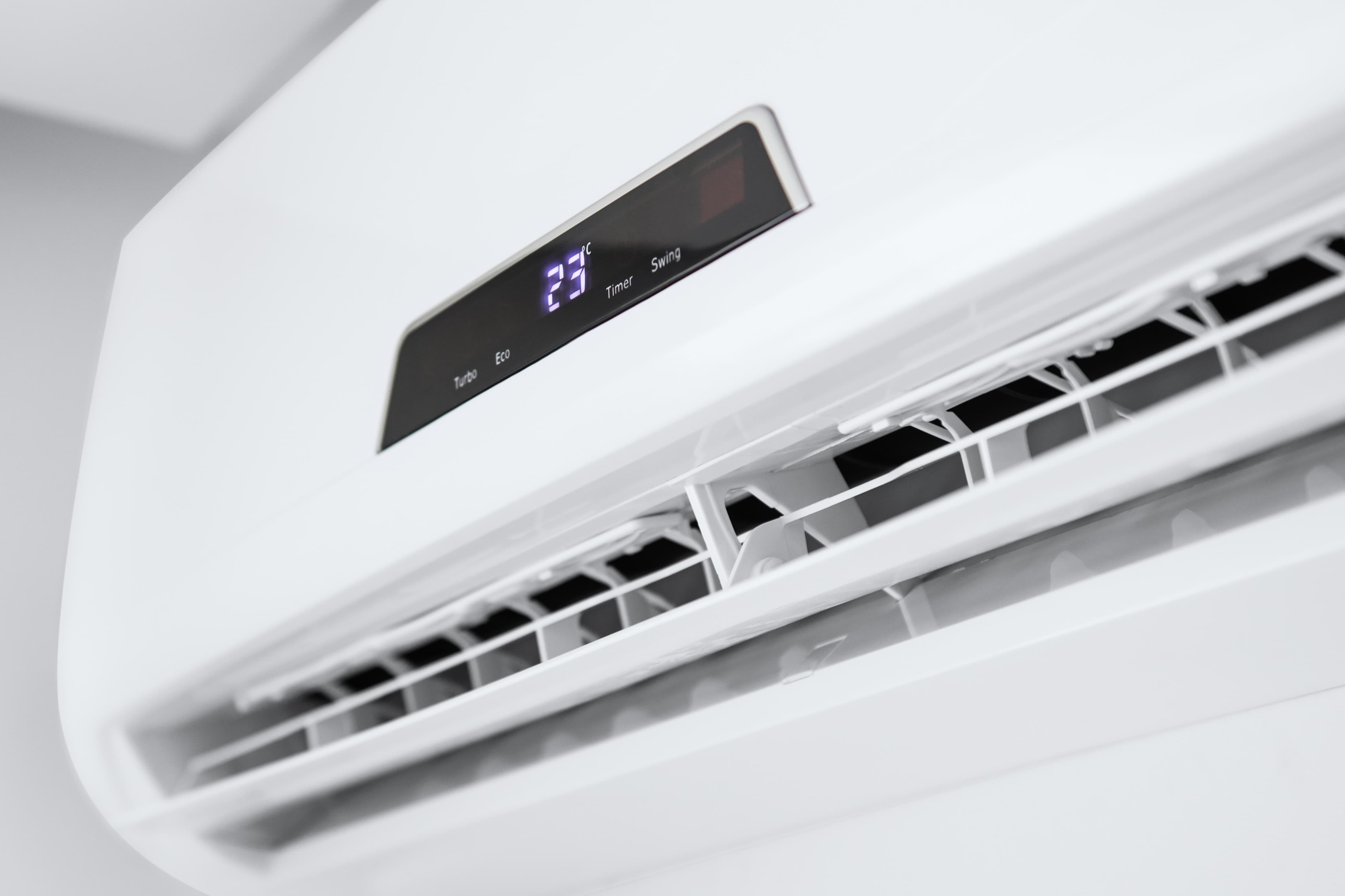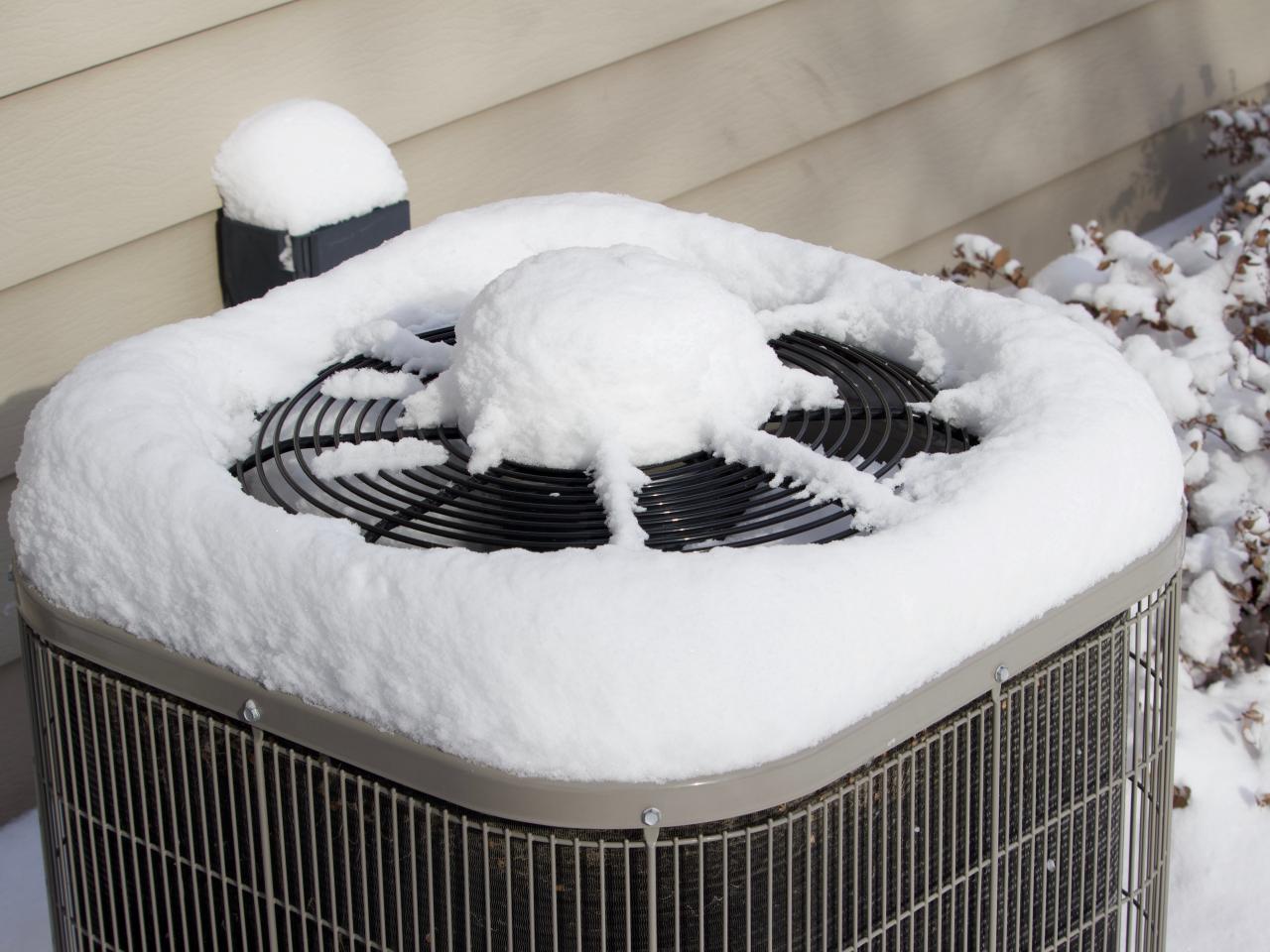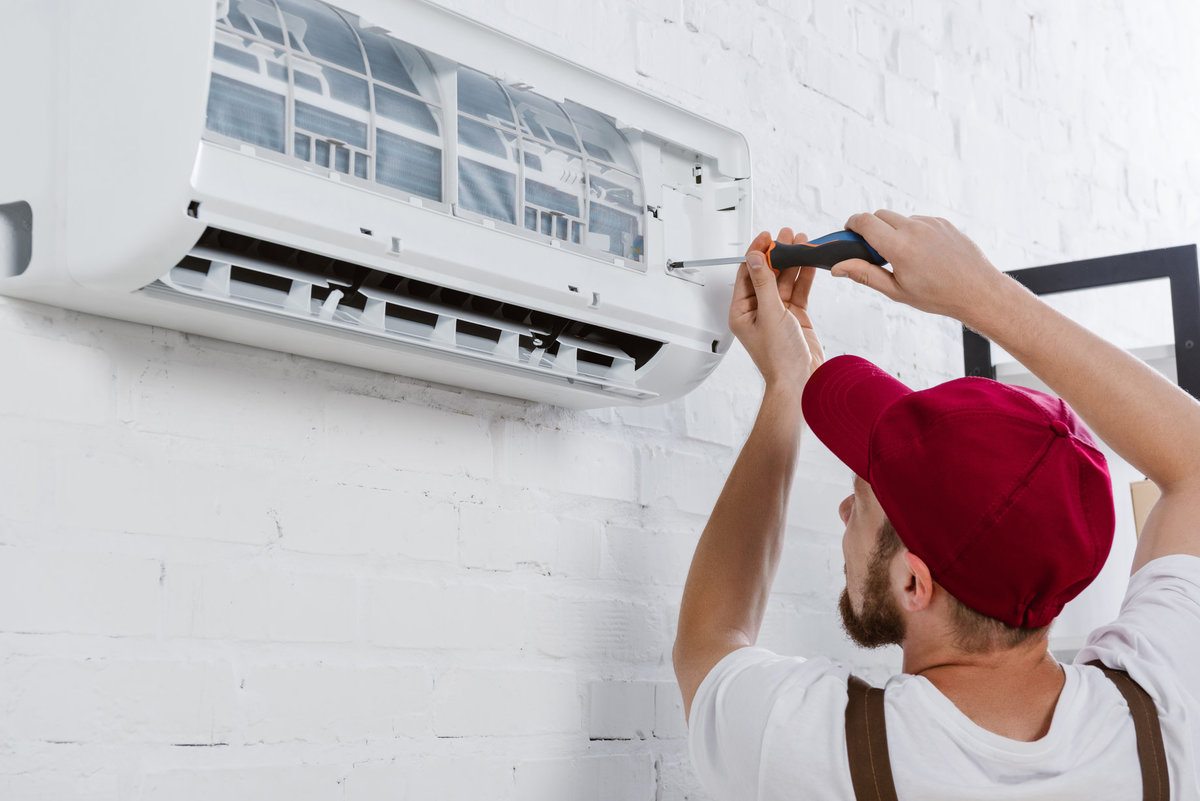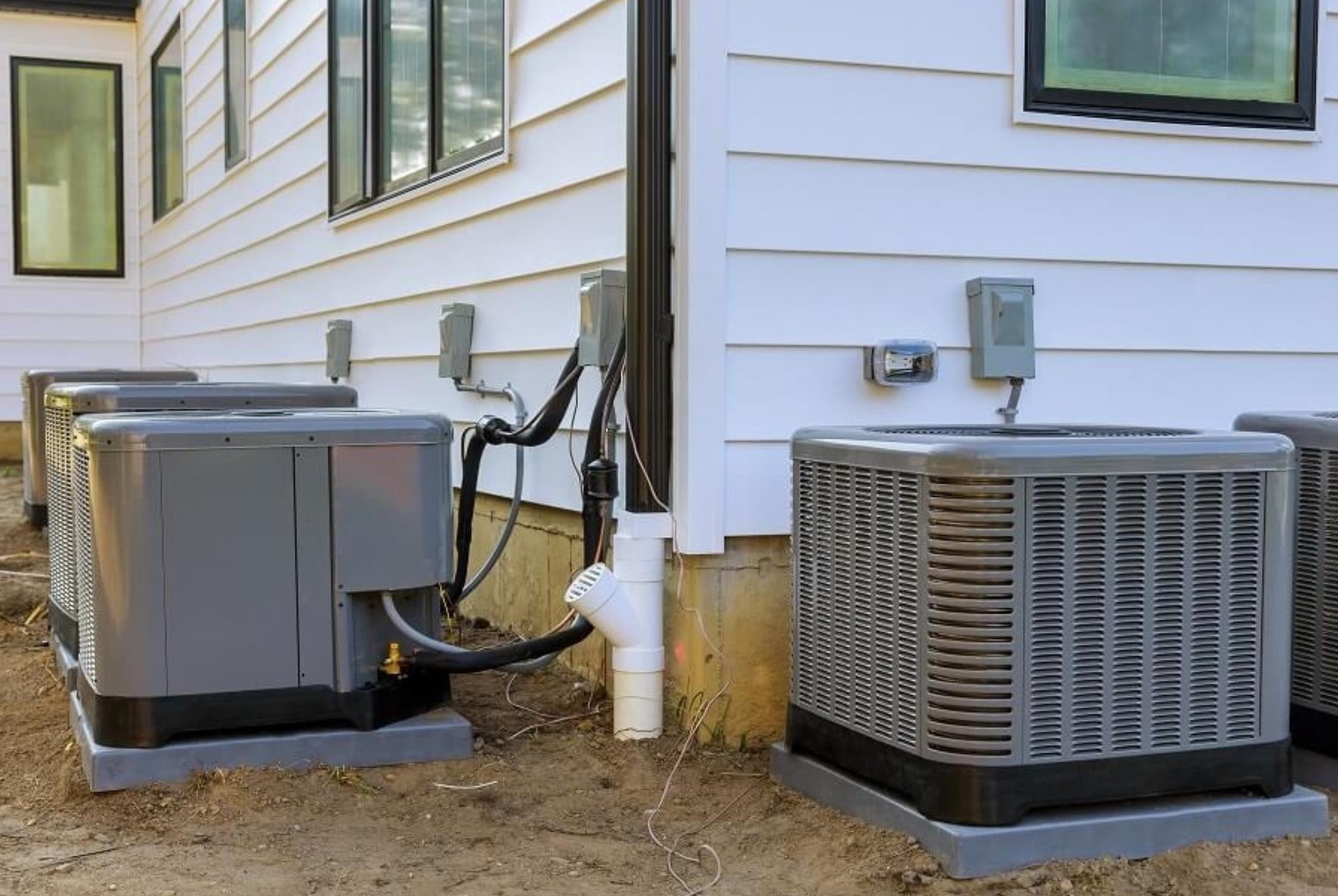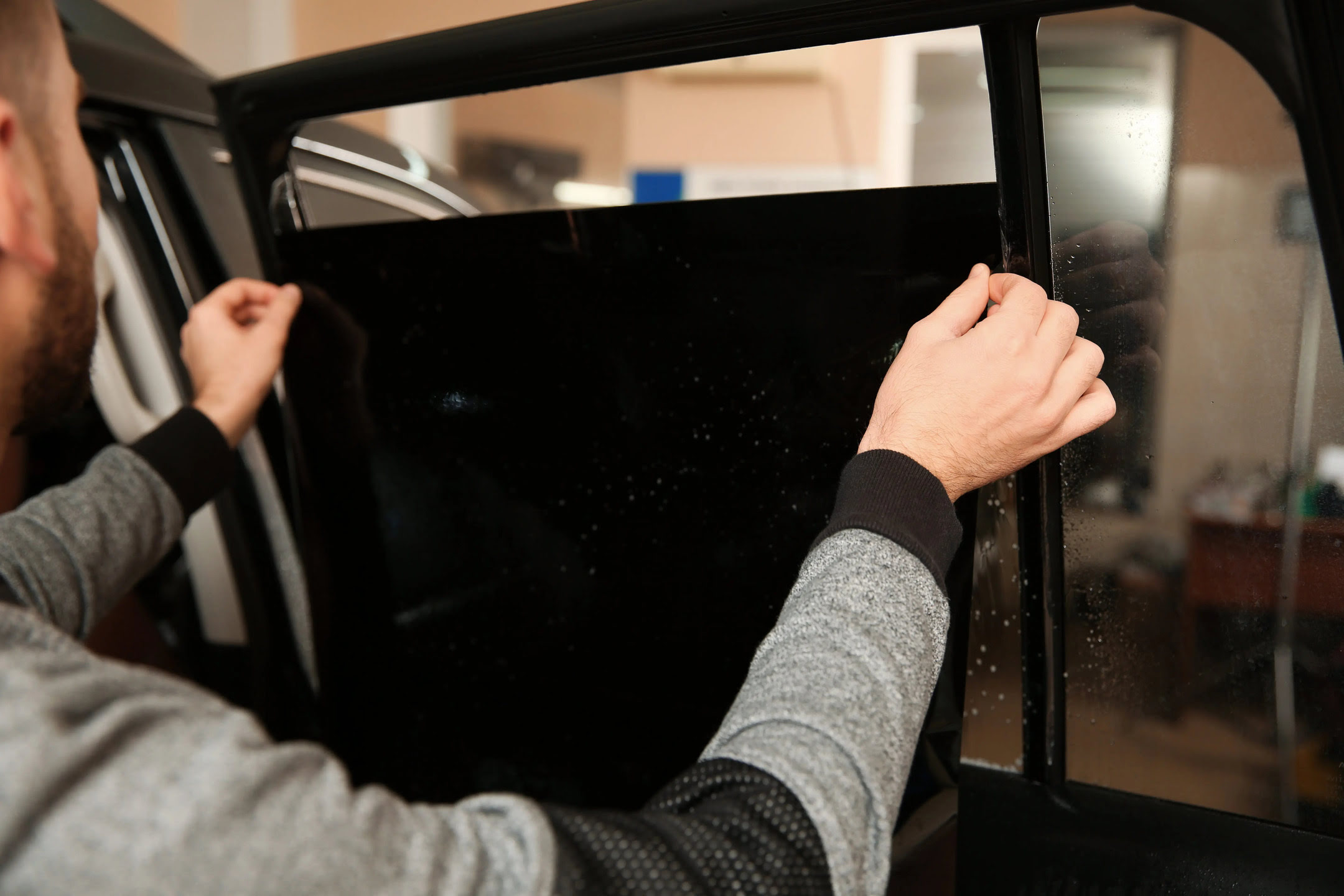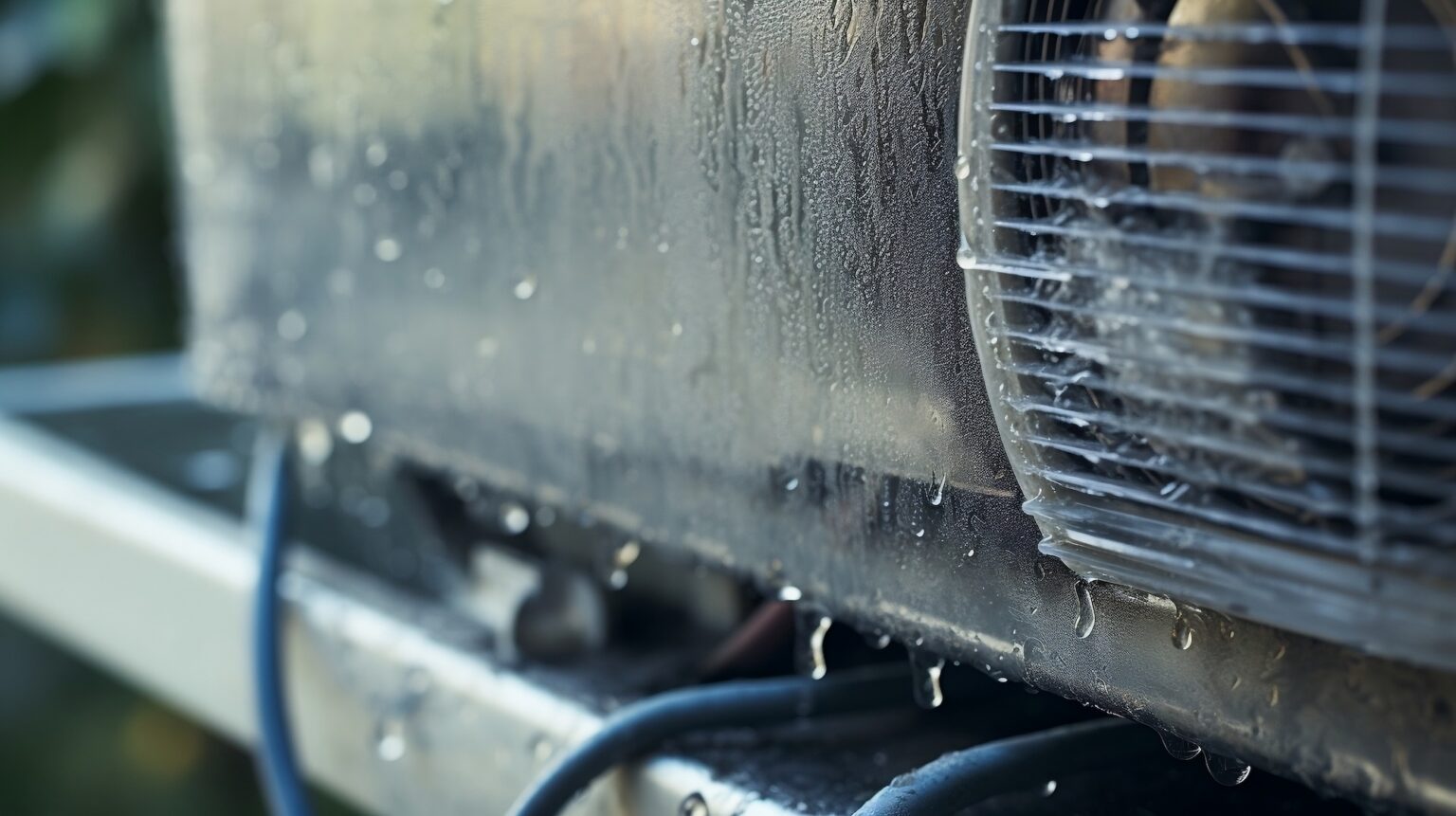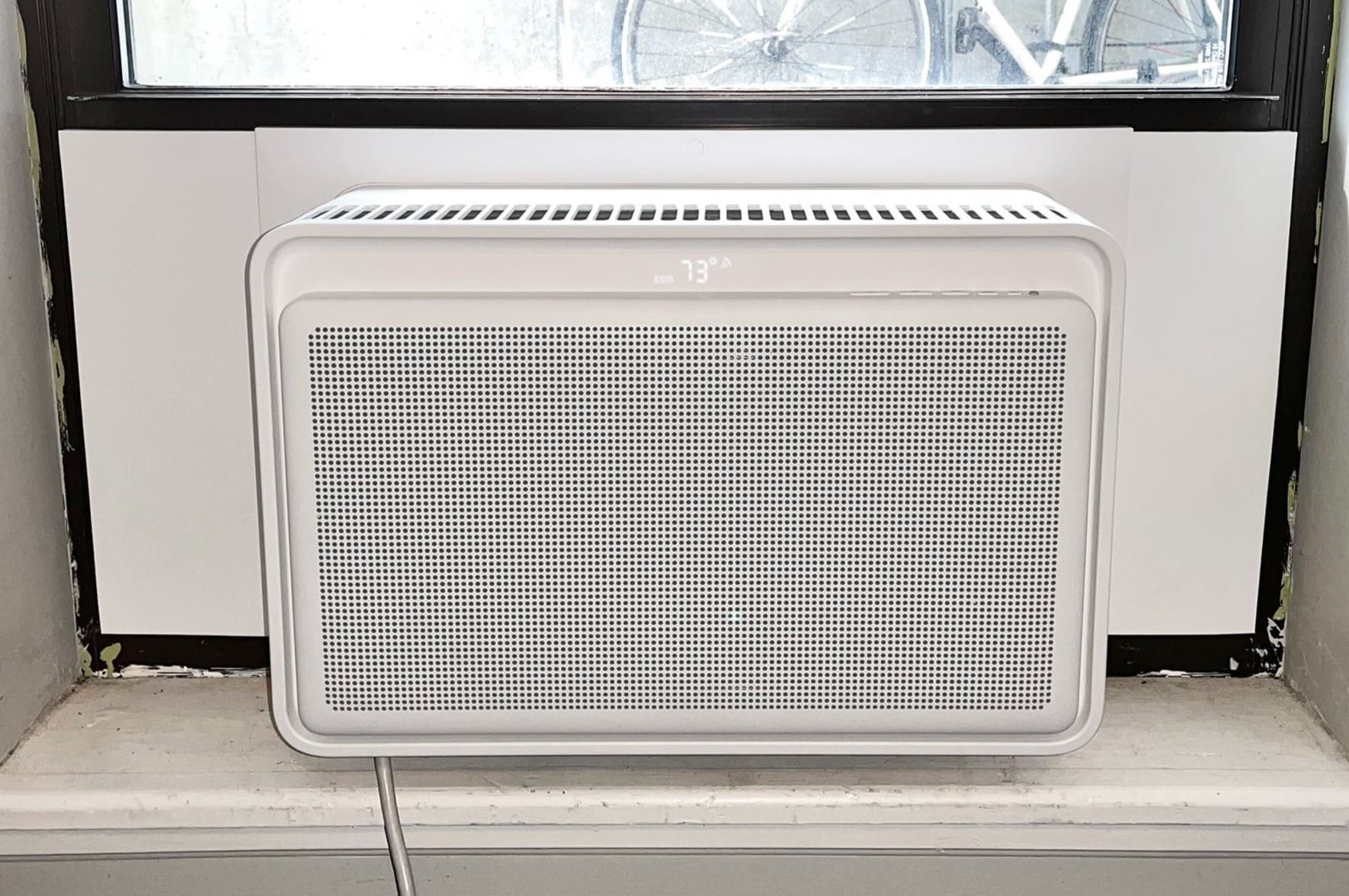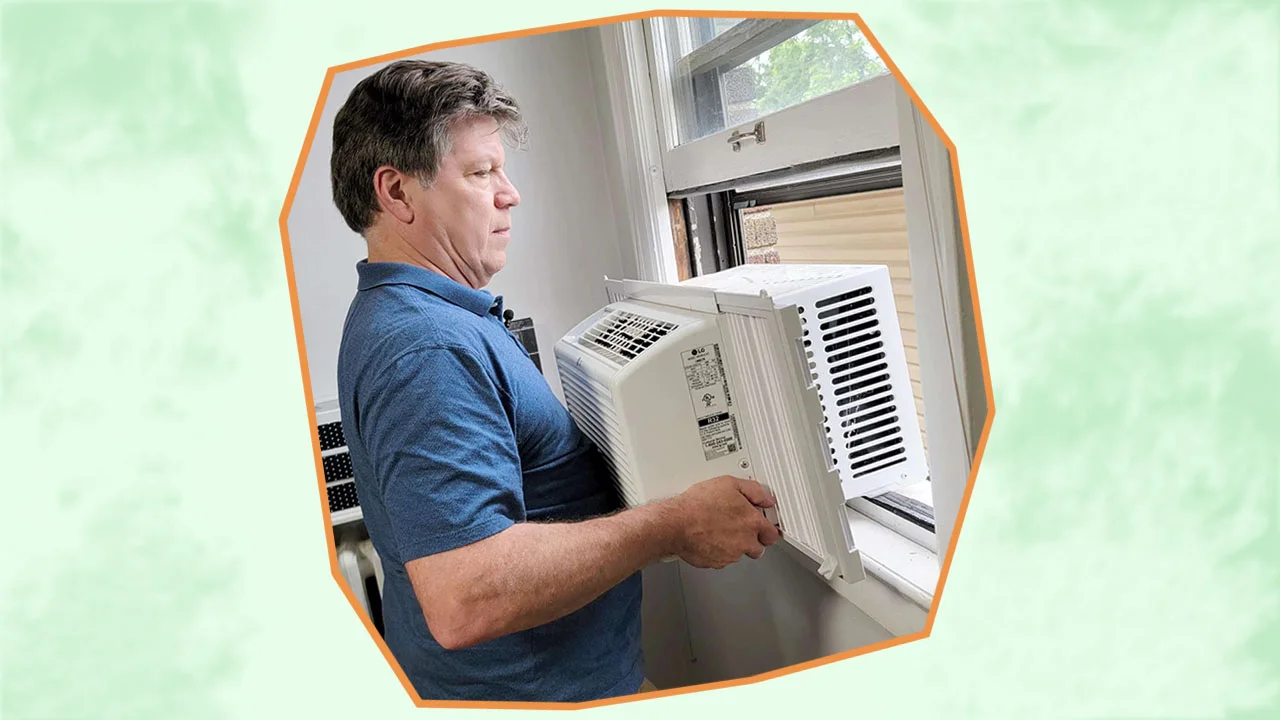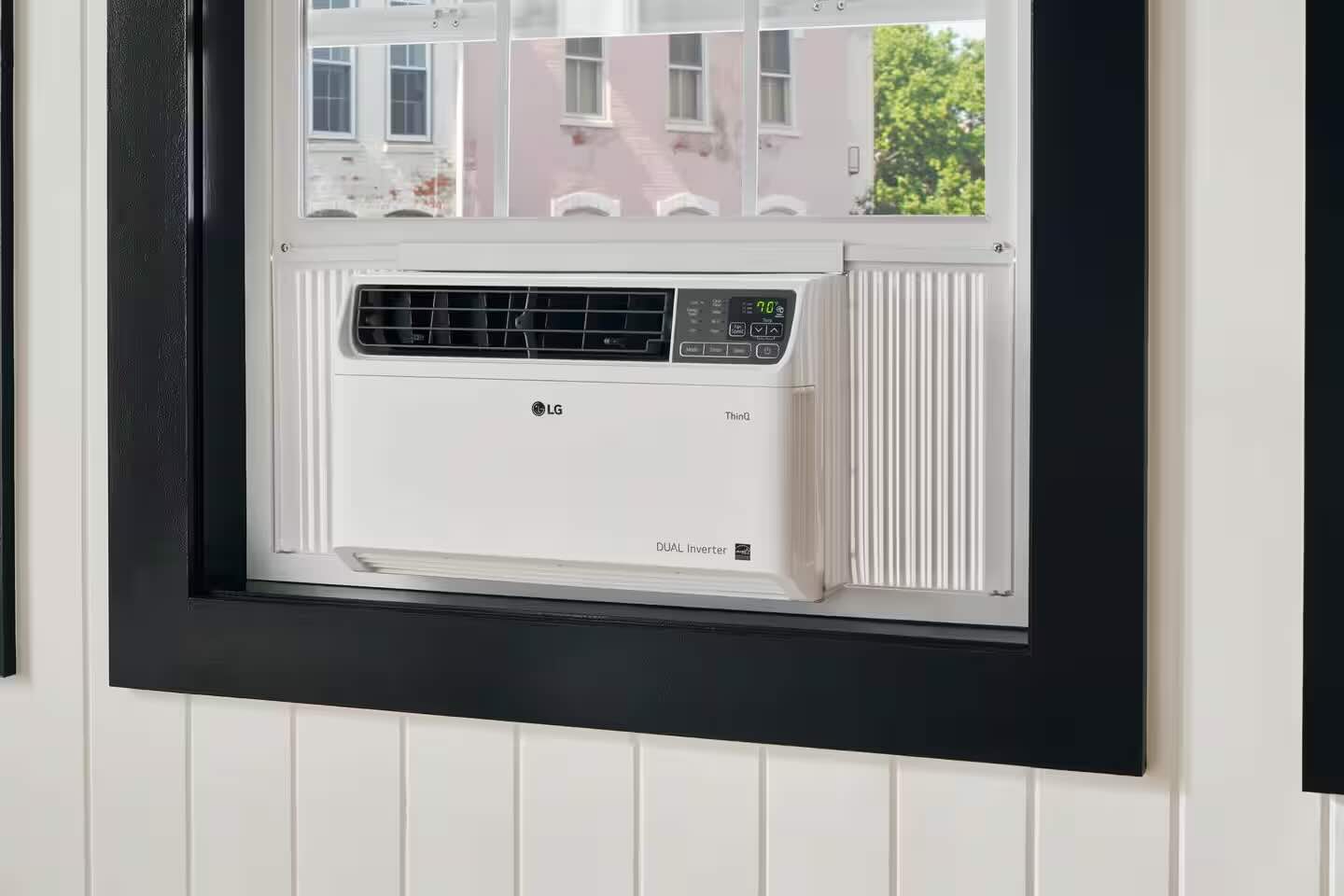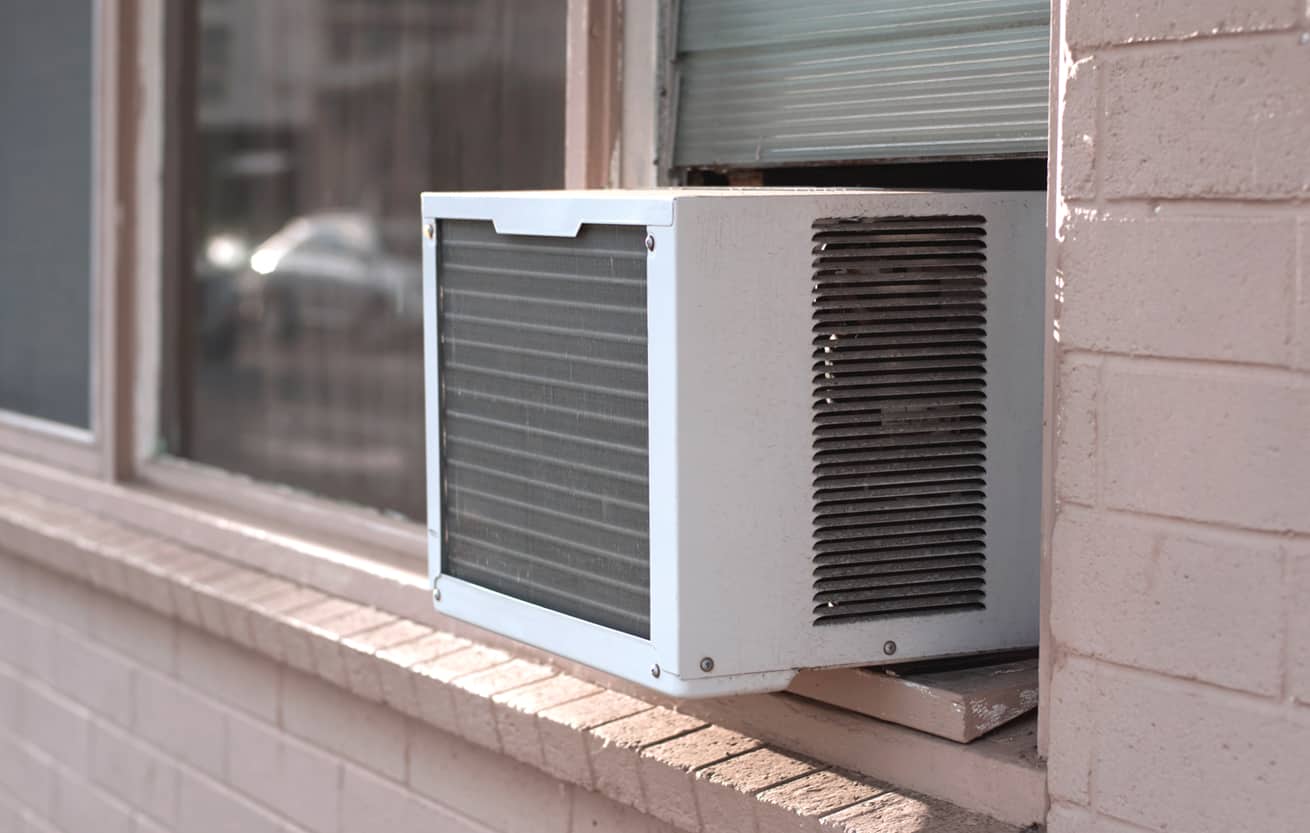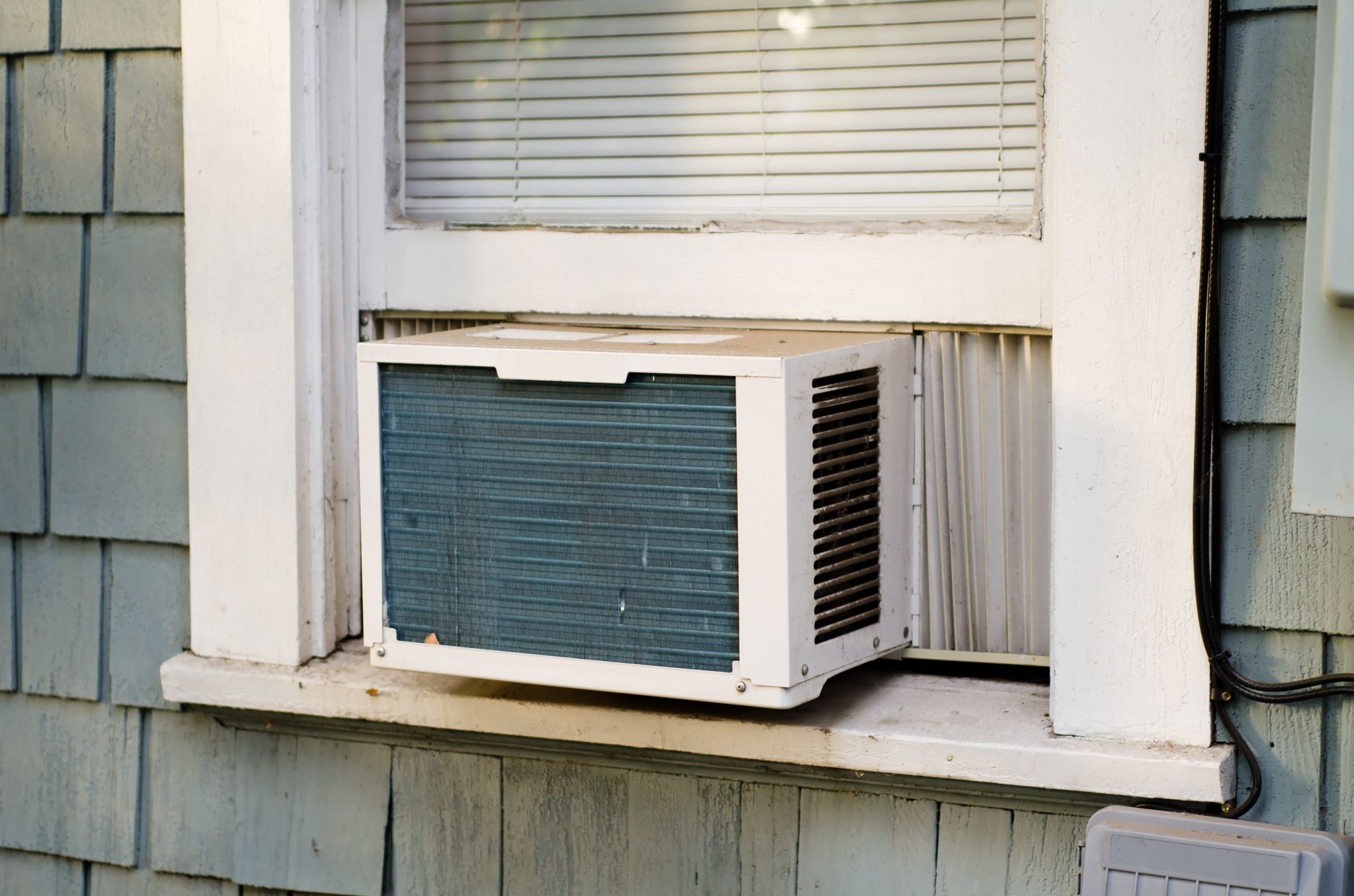Home>Home Maintenance>How Do I Cover My Window Air Conditioner For The Winter
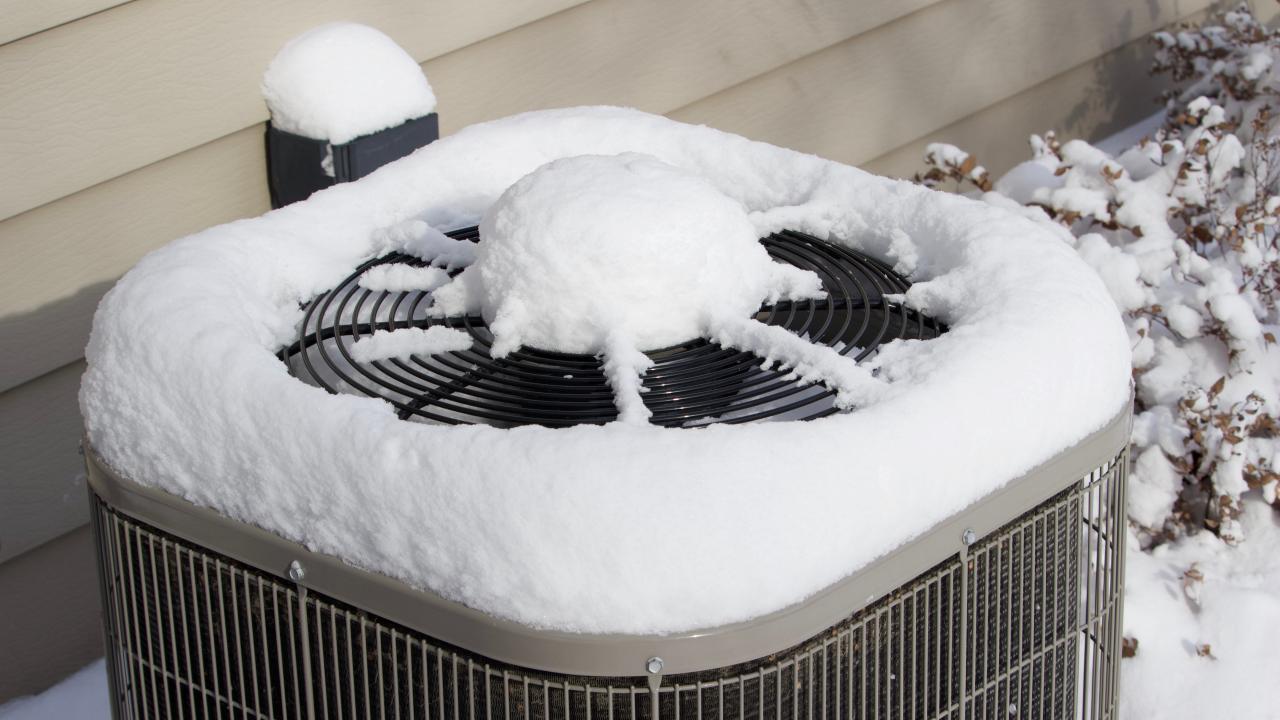

Home Maintenance
How Do I Cover My Window Air Conditioner For The Winter
Modified: March 7, 2024
Looking for tips on home maintenance? Learn how to cover your window air conditioner for the winter and protect your investment.
(Many of the links in this article redirect to a specific reviewed product. Your purchase of these products through affiliate links helps to generate commission for Storables.com, at no extra cost. Learn more)
Introduction
As the winter season approaches, it’s important to take proactive steps to protect your window air conditioner. While these appliances are designed to withstand outdoor elements to an extent, covering them for the winter can help extend their lifespan and improve their overall efficiency.
Window air conditioners are exposed to harsh weather conditions like snow, freezing temperatures, and strong winds during the winter months. Without proper protection, these elements can cause damage to the unit, such as rust, corrosion, and frozen coils. Additionally, debris like leaves, twigs, and dirt can accumulate in the unit, clogging the airflow and reducing its performance. By covering your window air conditioner, you can avoid these potential issues and ensure it functions optimally when you need it again in the warmer months.
In this article, we will explore the different options for covering your window air conditioner and guide you through the steps to properly winterize it. Whether you choose to use a dedicated air conditioner cover, build a DIY solution, or opt for insulating window film, we have you covered (pun intended!). We will also provide some useful tips to enhance the winterization process and answer some common questions about winterizing your window air conditioner.
So, if you’re ready to learn how to keep your window air conditioner protected and in top-notch condition during the winter, let’s dive into the steps for covering it effectively!
Key Takeaways:
- Protect your window air conditioner in winter to prevent damage from harsh weather, freezing coils, and debris buildup. Choose a cover, DIY solution, or insulating film for optimal protection.
- Follow steps to effectively cover your window air conditioner, including cleaning, choosing the right cover, sealing gaps, and monitoring throughout winter. Proper maintenance and protection extend the unit’s lifespan.
Read more: How To Cover A Window Air Conditioner
Why is it important to cover your window air conditioner?
Protecting your window air conditioner during the winter is crucial for several reasons. Let’s explore why covering your unit is so important:
- Preventing damage from weather elements: Winter weather can be brutal, with snow, ice, and freezing temperatures. Exposing your window air conditioner to these elements can lead to rust, corrosion, and other damages. By covering it, you create a barrier that shields the unit from these harsh conditions.
- Avoiding freezing coils: When temperatures drop below freezing, the condensation on the coils of your air conditioner can freeze. This not only affects the performance of the unit but can also lead to damage. Covering the air conditioner helps maintain a slightly warmer environment around the coils, preventing freezing and prolonging the life of your appliance.
- Preventing debris buildup: During the winter, wind gusts can blow leaves, twigs, and other debris into your window air conditioner. This debris can block the vents, restrict airflow, and decrease the efficiency of the unit. By covering the air conditioner, you create a barrier that prevents debris from getting inside and clogging the system.
- Improving energy efficiency: An uncovered window air conditioner can allow cold air from outside to seep into your home. This can result in drafts and higher energy consumption as the unit works harder to maintain the desired temperature. By covering it, you create an extra layer of insulation that helps maintain the warmth inside your home and reduces energy waste.
- Extending the lifespan of your air conditioner: By protecting your window air conditioner during the winter, you can significantly increase its lifespan. The less exposure it has to harsh weather conditions, the longer it will last. This means you will get more value out of your investment and avoid the need for costly repairs or replacements.
Overall, covering your window air conditioner during the winter is a smart maintenance practice that can save you money, enhance the performance of your appliance, and ensure it lasts for many seasons to come.
Steps for covering your window air conditioner for winter
Now that you understand the importance of covering your window air conditioner for the winter, let’s go over the steps to effectively protect your unit:
- Clean the unit: Before covering your window air conditioner, make sure to clean it thoroughly. Remove any dirt, debris, or leaves that may have accumulated. Use a vacuum, brush, or gentle detergent to clean the exterior and interior of the unit.
- Remove and store the filter: Most window air conditioners have removable filters that should be taken out before covering the unit. Clean the filter according to the manufacturer’s instructions and store it in a clean, dry place.
- Inspect for any damage: Take a close look at your window air conditioner for any signs of damage, such as cracks, loose parts, or worn-out seals. If you notice any issues, address them before covering the unit to prevent further damage during the winter.
- Choose the right cover: Select a cover specifically designed for window air conditioners. It should be waterproof, durable, and the right size to fit your unit. Ensure that the cover completely encloses the air conditioner, including the sides and back.
- Install the cover: Place the cover over the window air conditioner, making sure it fits snugly. Secure it with any provided straps or fasteners to prevent it from blowing off in strong winds. Ensure that the cover is tight enough to protect the unit but not so tight that it puts pressure on delicate components.
- Seal any gaps: Check for any gaps around the edges of the cover or between the cover and the window frame. Use weatherstripping or adhesive foam tape to seal these gaps and prevent drafts from entering your home.
- Protect the exterior: In addition to covering the air conditioner itself, consider protecting the exterior components, such as the fan and compressor unit, with a waterproof tarp or plastic sheeting. Secure the cover to prevent it from being blown away by wind.
- Monitor throughout the winter: Periodically check the cover and the condition of your window air conditioner throughout the winter. If you notice any damage or moisture build-up, address it promptly to prevent further issues.
- Remove the cover in spring: Once the winter season is over and temperatures rise, remove the cover and inspect your window air conditioner before starting it up again. Clean any dust or debris that may have accumulated and ensure that all components are in proper working condition.
By following these steps, you can effectively cover your window air conditioner for the winter months. Taking the time to properly protect your unit will help maintain its performance, extend its lifespan, and ensure that it’s ready to keep you cool when the warmer weather returns.
Option 1: Using an air conditioner cover
One popular option for covering your window air conditioner is to use a dedicated air conditioner cover. These covers are specifically designed to fit over window units and provide protection against the elements. Here’s how you can use an air conditioner cover:
- Select the right cover: Look for a cover that is designed for your specific window air conditioner model or one that is adjustable to fit various sizes. Ensure that the cover is made of waterproof and durable material to withstand the winter weather.
- Clean the unit: Before installing the cover, make sure to clean your window air conditioner. Remove any dirt, debris, or leaves that may have accumulated. Wipe down the interior and exterior to ensure a clean surface.
- Follow the manufacturer’s instructions: Each cover may have slightly different installation instructions. Read the manufacturer’s instructions carefully and follow them step-by-step to ensure a proper fit and maximum protection.
- Secure the cover: Once the cover is in place, secure it using the provided straps or fasteners. The cover should fit snugly over the entire unit, including the sides and back, to prevent any gaps where moisture or debris could enter.
- Seal any gaps: Check for any gaps around the edges of the cover or between the cover and the window frame. Use weatherstripping or adhesive foam tape to seal these gaps and prevent drafts from entering your home.
- Monitor throughout the winter: Regularly check the cover and your window air conditioner throughout the winter. If you notice any damage, moisture build-up, or other issues, address them promptly to prevent further damage to your unit.
- Remove the cover in spring: When the winter season is over and temperatures start to rise, remove the cover from your window air conditioner. Inspect the unit for any dust or debris that may have accumulated and ensure that all components are clean and in proper working condition before starting it up again.
Using an air conditioner cover is a convenient option as it provides a dedicated protective layer for your window air conditioner. It helps to shield the unit from snow, ice, wind, and debris, reducing the risk of damage and extending its lifespan.
Remember to choose a cover that fits properly, follow the manufacturer’s instructions, and regularly monitor the unit throughout the winter for any signs of damage or issues. By taking these steps, you can effectively protect your window air conditioner and ensure its optimal performance when you need it again.
Option 2: Building a DIY cover
If you prefer a more hands-on approach or want to save some money, you can build a DIY cover for your window air conditioner. Here’s how you can create your own cover:
- Gather the materials: To build your DIY cover, you will need a few materials. These may include plywood, foam insulation board, screws, hinges, weatherproof fabric or tarp, and a waterproof adhesive.
- Measure your window air conditioner: Take accurate measurements of your window air conditioner, including its width, height, and depth. Use these measurements to determine the dimensions of your DIY cover.
- Cut the plywood and insulation board: Use a saw or jigsaw to cut the plywood and foam insulation board according to your measurements. The plywood will serve as the base, while the foam insulation board will provide insulation and protection for the unit.
- Attach the foam insulation board to the plywood: Use screws or a strong waterproof adhesive to secure the foam insulation board to the plywood base. This will create a stable and insulated surface for your DIY cover.
- Cover the frame: Wrap the plywood and foam insulation board frame with weatherproof fabric or tarp. Make sure the material is waterproof and durable enough to withstand the winter weather.
- Add hinges: Install hinges on one side of the frame to create a hinged cover. This will allow you to easily access the window air conditioner when needed without fully removing the cover.
- Secure the cover: Attach clasps or straps to the opposite side of the frame from the hinges to keep the cover securely closed. This will prevent it from being blown off by strong winds.
- Seal any gaps: Check for any gaps or openings where moisture or debris could enter. Seal these gaps using weatherstripping or adhesive foam tape to ensure a tight and secure fit.
- Monitor throughout the winter: Regularly inspect your DIY cover and the window air conditioner throughout the winter. If you notice any damage, moisture build-up, or other issues, address them promptly to prevent further damage to your unit.
- Remove the cover in spring: When winter is over, remove the DIY cover from your window air conditioner. Clean any dust or debris that may have accumulated and ensure that all components are clean and in proper working condition before starting the unit again.
Building a DIY cover allows you to customize it to fit your specific window air conditioner and match your preferences. It can be a cost-effective solution while still providing the necessary protection for your unit during the winter months.
Remember to take accurate measurements, use high-quality materials, and seal any gaps to ensure the best performance and protection for your window air conditioner. With a bit of creativity and DIY skills, you can create a functional cover that keeps your unit safe from winter weather elements.
To cover your window air conditioner for the winter, use a weatherproof cover or tarp to protect it from the elements. Make sure to secure the cover tightly to prevent any drafts or moisture from getting in.
Option 3: Using insulating window film
Another option for covering your window air conditioner during the winter is to use insulating window film. This option not only provides protection but also helps to improve energy efficiency. Here’s how you can use insulating window film:
- Clean the area around the window: Before applying the insulating window film, make sure the area around the window is clean. Remove any dirt, dust, or debris from the window frame and glass.
- Measure and cut the film: Measure the dimensions of your window and cut the insulating window film accordingly. Make sure to leave a couple of extra inches on all sides to ensure proper coverage.
- Attach the film to the window: Peel the backing from the adhesive side of the film and carefully apply it to the window glass. Use a squeegee or credit card to smooth out any air bubbles and ensure proper adhesion. Follow the manufacturer’s instructions for best results.
- Shrink the film: If the insulating window film is designed to shrink, use a hairdryer or heat gun to shrink the film, creating a tight and smooth surface. This process helps increase the effectiveness of the film in insulating against drafts and cold temperatures.
- Trim any excess film: Once the film is attached and shrunk, trim any excess film using a sharp utility knife. Be careful not to damage the window frame or glass during this process.
- Repeat for all windows: If you have multiple windows with air conditioners, repeat the process of measuring, cutting, applying, and shrinking the insulating window film for each window.
- Monitor throughout the winter: Regularly check the insulating window film throughout the winter to ensure it remains in good condition. If there are any signs of damage or peeling, consider replacing or repairing the film to maintain its effectiveness.
- Remove the film in spring: When winter is over and temperatures start to rise, remove the insulating window film from your windows. Follow the instructions provided by the manufacturer to safely remove the film without causing any damage to the window glass.
Using insulating window film not only protects your window air conditioner but also provides an extra layer of insulation to keep your home warmer during the winter. It helps to reduce drafts and heat loss, improving energy efficiency and potentially saving on heating costs.
Remember to properly clean the window surface, carefully measure and cut the film, and ensure a tight and smooth application. Regularly monitor the film throughout the winter and remove it when temperatures rise to maintain its effectiveness.
By choosing the option of insulating window film, you can provide both protection and energy efficiency benefits for your window air conditioner and your home as a whole.
Tips for winterizing your window air conditioner
Winterizing your window air conditioner involves more than just covering it. To ensure proper protection and maintenance, keep these tips in mind:
- Perform regular maintenance: Prior to winter, clean your window air conditioner thoroughly and inspect it for any signs of damage. This includes cleaning the filters, coils, and fan blades. Address any necessary repairs or maintenance to prevent further issues during the winter.
- Choose the right location: When installing a window air conditioner, choose a location that provides minimal exposure to harsh weather conditions. Placing it on the north side of your home or under a protected overhang can help minimize exposure to snow, ice, and strong winds.
- Ensure proper insulation: Insulate around the unit by using foam insulation strips or weatherstripping. This helps to prevent drafts and heat loss, improving the energy efficiency of your window air conditioner and reducing the workload during winter operation.
- Check for leaks: On a day with a breeze, feel around the edges of the window air conditioner for any air leaks. If you detect air coming in, reseal the gaps with weatherstripping or adhesive foam tape to ensure a tighter fit.
- Protect the electrical components: Use a waterproof cover or plastic bag to protect the electrical components of your window air conditioner from moisture. Wrap the bag securely around the unit, ensuring that it does not interfere with the airflow or vents.
- Remove or cover the exterior components: If your window air conditioner has exterior components such as a fan or compressor, consider removing them and storing them indoors for the winter. If removal is not possible, use a waterproof tarp or cover to protect them from the elements.
- Regularly check the cover: Throughout the winter, inspect the cover of your window air conditioner for any signs of damage or moisture build-up. Remove any debris or snow that may accumulate on top of the cover to prevent excessive weight and potential damage.
- Remove the cover in spring: Once the winter season is over and temperatures start to rise, remove the cover from your window air conditioner. Clean any dust or debris that may have accumulated and ensure that all components are in working order before using it again.
- Schedule professional maintenance: Consider scheduling a professional maintenance service for your window air conditioner before and after the winter season. This can optimize its performance, address any potential issues, and ensure its longevity.
By following these tips, you can effectively winterize your window air conditioner and protect it from harsh winter conditions. Proper maintenance and attention to detail will help extend the lifespan of your unit and ensure that it operates efficiently when you need it again in the warmer months.
Frequently Asked Questions (FAQs)
Here are some common questions about winterizing your window air conditioner:
- Should I cover my window air conditioner for the winter?
- What type of cover should I use?
- Can I use a tarp or plastic sheet to cover my window air conditioner?
- Should I remove my window air conditioner for the winter?
- Can I use insulating window film instead of a cover?
- When should I remove the cover from my window air conditioner?
- Can I use my window air conditioner during the winter?
- Do I need professional help to winterize my window air conditioner?
Yes, covering your window air conditioner for the winter is highly recommended. It provides protection against harsh weather elements, prevents damage, and extends the lifespan of the unit.
There are dedicated air conditioner covers available in the market that are designed specifically for window units. These covers are waterproof and provide optimal protection. Alternatively, you can also consider building a DIY cover using materials like plywood and weatherproof fabric.
While it’s better to use a cover specifically designed for air conditioners, you can use a tarp or plastic sheet as a temporary measure. Ensure that it is secured tightly to prevent it from being blown off by the wind.
Removing your window air conditioner for the winter is not necessary, but it can be done if you prefer. If you choose to keep it in place, make sure to cover it properly to protect it from the elements.
Yes, insulating window film can be used as an alternative to a cover. It provides insulation and helps to reduce drafts and heat loss. However, make sure to choose a film that is specifically labeled for insulation purposes.
You should remove the cover from your window air conditioner when the winter season is over and temperatures start to rise. Make sure to inspect the unit, clean any debris, and ensure that all components are in proper working condition before using it again.
Window air conditioners are primarily designed for cooling, not heating. They may not be efficient or effective for heating your home during the winter. It is recommended to use a proper heating system for winter months.
Winterizing your window air conditioner can usually be done without professional help. However, if you are unsure about any aspect of the process or notice any significant issues, it is advisable to seek the assistance of a professional HVAC technician.
If you have any additional questions or concerns about winterizing your window air conditioner, consider consulting the manufacturer’s guidelines or reaching out to a professional for personalized advice.
Conclusion
Winterizing your window air conditioner is a crucial step in maintaining its performance, extending its lifespan, and protecting it from harsh weather conditions. Whether you choose to use an air conditioner cover, build a DIY cover, or use insulating window film, the goal is to ensure that your unit remains in optimal condition during the winter months.
By covering your window air conditioner, you create a protective barrier against snow, ice, wind, and debris. This helps to prevent damage such as rust, corrosion, freezing coils, and clogged vents. Additionally, covering your unit can improve energy efficiency by minimizing drafts and heat loss.
If you opt for an air conditioner cover, make sure to select one that fits properly and covers the entire unit, including the sides and back. Installing the cover securely and sealing any gaps is vital to ensure maximum protection. Alternatively, building a DIY cover allows for customization and can be a cost-effective solution.
Insulating window film is another option that not only protects your window air conditioner but also increases energy efficiency by reducing drafts. Applying the film properly and ensuring a tight fit is essential for optimal performance.
Remember to perform regular maintenance on your window air conditioner, choose the right location for installation, and seal any gaps or leaks. Monitoring the unit throughout the winter and removing the cover or film in spring allows for inspection and cleaning before using it again.
By following the tips and steps provided in this article, you can effectively winterize your window air conditioner and enjoy its benefits for years to come. Proper maintenance and protection will not only save you from costly repairs but also ensure that your unit operates efficiently, keeping you cool when the warmer weather returns.
So, take the necessary steps to winterize your window air conditioner and have peace of mind knowing that it’s well-protected and ready to perform at its best when you need it again.
Frequently Asked Questions about How Do I Cover My Window Air Conditioner For The Winter
Was this page helpful?
At Storables.com, we guarantee accurate and reliable information. Our content, validated by Expert Board Contributors, is crafted following stringent Editorial Policies. We're committed to providing you with well-researched, expert-backed insights for all your informational needs.
